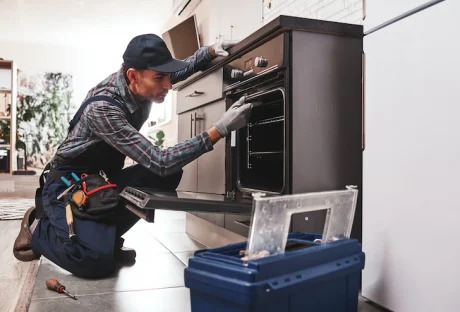Starting the process of tidying up and arranging your home might feel overwhelming, but it’s incredibly rewarding.
A clean, organized space not only brings a sense of calmness but also sets the stage for enjoyable moments with loved ones.
This beginner’s manual on cleaning and organizing equips you with the essentials to kickstart your journey towards a serene living environment.
So, let’s get started with it.
Step – 1: Begin Your Journey with Something Small
Beginning with a small area can help alleviate the overwhelming feeling of cleaning and organizing your home. For example, starting in just one room or a tiny section within a room can reduce the stress associated with the task.
Once you’ve tidied up and organized that small space, it tends to inspire further progress.
It’s like a chain reaction— as soon as you initiate the process, you’ll often find the motivation to continue. The sense of accomplishment from cleaning that initial space acts as a catalyst, propelling you to tackle more cleaning and organizing tasks.
Step – 2: Declutter Your Rooms. All of Them!
Before diving into organizing, it’s crucial to declutter thoroughly.
Start with a smaller space like your fridge. Empty its content, discarding expired or inedible items. Clean all of the surfaces using a damp cloth and your preferred all-purpose cleaner.
When clearing out various areas in your home, prioritize keeping only the things you truly need or cherish. If it’s challenging to part with certain items, remember they might serve someone else while giving you more room at home.
Consider donating or selling belongings you no longer adore. Discard broken, incomplete, or heavily worn-out items. Items that are no longer in use—like old toys, baby gear, clothes, or furniture—can find new homes through donation or sale.
This decluttering not only creates space for other purposes but also makes it easier to access and appreciate the things you genuinely value and use.
Step 3: Get a Cleaning Caddy for Yourself
Before starting your home cleaning routine, it’s helpful to prepare a portable cleaning kit that you can easily carry around.
You don’t need a multitude of cleaners or tools—just include what you’ll actually use. Your cleaning kit can be as simple as a bucket, plastic bin, canvas bag with handles, or any larger container that suits your convenience.
Whether store-bought or homemade, the key is to have a portable solution that suits your needs as you move from room to room.
Step 4: Keep the Surfaces Clean
After completing the decluttering process, it’s crucial to tidy up the space before organizing. Quickly cleaning the area will impart a fresh feel, enhancing the likelihood of maintaining its cleanliness for an extended period.
Here are some cleaning tips that you might need…
- Create a cleaning caddy for easy access to supplies.
- Then clean from higher surfaces downward to catch falling debris as you progress.
- Utilize a vacuum attachment to clear drawers, shelves, cabinets, or closets of any remaining debris.
- Use a damp microfiber cloth to wipe surfaces, ensuring thorough cleaning. Remove any items that don’t belong in the cleaned area.
Step – 5: Organize Everything
The crucial element in home organization is to gather similar items together.
Whether it’s your refrigerator, pantry, kitchen cabinets, bathroom, living room, kids’ rooms, closets, or garage, arranging items of the same kind is essential for easy access and visibility. Scattered items make it difficult to locate what you need and can lead to clutter.
By grouping similar items, you create a clear system that helps in both finding items and guiding your family when it comes to tidying up.
I: How to Organize Your Kitchen?
It’s beneficial to begin organizing your kitchen by focusing on a small area first, as this can inspire you to tackle other spaces. The kitchen often serves as the hub of a home and sees frequent use, making it a great starting point.
Once you’ve sorted out your kitchen, the task of taking care of the rest of your house becomes more manageable. A smart step in this process is to begin with your refrigerator. Streamlining your fridge organization can serve as a catalyst for organizing other areas.
II: Organizing Your Fridge
Arranging your refrigerator involves categorizing similar food items–together for better organization. With adjustable shelves and doors, along with additional bins, you can optimize the space quite easily. Clear plastic bins are particularly helpful as they allow easy visibility of their contents. They’re convenient for accessing snacks, packing lunches, and planning meals.
Here are examples of foods that should be grouped together either in bins, on shelves, or in drawers for a more organized fridge…
- Bagged fruits and vegetables
- Cheeses and lunch meals
- Fresh vegetables and fruits
- Sauces and condiments
- Salad dressings
III: Organizing the Other Parts of Your House
After you’ve sorted one area, take the same approach to the rest of your house.
Use the refrigerator organization tips as a template for each room: clear out unnecessary items, tidy up, and then arrange everything neatly.
Remember, the key is to tackle each room gradually to avoid feeling swamped, following the same method each time.
- If there are any similar types of items available in your house, group them together.
- Clean the area once you are done with the former step.
- Get rid of anything and everything that you don’t want to use.
Step 6: Disinfect the Surface Areas and Countertops
Clean the hard surfaces around your home thoroughly, including countertops, appliances, cabinets, doorknobs, light switches, TV remotes, and phones.
Disinfect surfaces that are commonly touched to reduce the spread of germs.
Create a natural disinfectant by combining one-fourth to half a cup of white or apple cider vinegar with one cup of water. They’ll work like magic for you.
Make It a Group Activity
Collaborating as a team is a top-notch method for swiftly tidying up a house. Plan ahead with your family for a designated time and distribute specific chores among everyone.
Joining forces not only injects some enjoyment into the cleaning process but also ensures a sparkling home in no time.
You can also opt for a reputable cleaning service that can help you with the process. It can seem a little more expensive than usual, but it’s much more sustainable per see.
Read Also:























All Comments
temporary email providers
Good post! We will be linking to this particularly great post on our site. Keep up the great writing